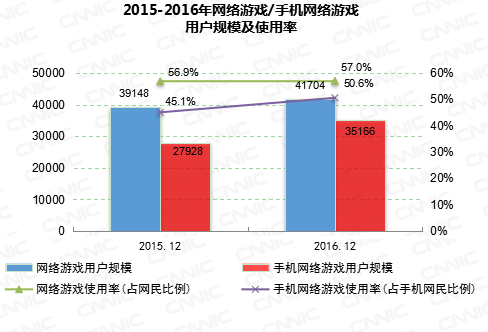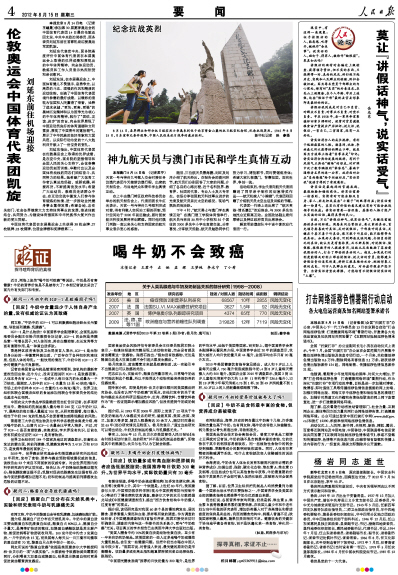In June 2022, the TV series "I love you when I buy and leave" and "Come on! The three works of Mom and Wife’s Choice were broadcast in a concentrated way. Some people said that Yuan Wenkang, the leading actor, was going to be "hot" again, but at this time, he didn’t care if he was "hot or not". Through continuous performances over the years, he understood that the best praise for an actor is to remember his "role". Compared with fame and fortune, professionalism is the ultimate goal he pursues. "This is what makes me really happy."

In the past June, three TV series starring Yuan Wenkang were broadcast one after another. Photo courtesy of respondents
Wife’s Choice
Practicing breathing and wearing heightening pads are all "tired" because of the gaos thought
Yuan Wenkang plays the leading actor Gao Jiawei in the TV series Wife’s Choice. He is a self-made emotional expert with a successful career. While answering questions about other people’s emotions, he is also an "emotional" man. Besides his wife, he also maintains close relationships with many women. At first, he thought he had done a perfect job. Later, at the suggestion of his old boss, he found that his wife Fang Tang (Sun Li) seemed to be investigating him, so a husband-wife offensive and defensive war of "you check, I defend, you find evidence, I destroy traces" began.
From the audience’s point of view, Yuan Wenkang felt that Gao Jiawei’s life was really "too chaotic". But as an actor who shaped him, Yuan Wenkang said that since he couldn’t agree with his life, "I will play him as an ordinary person. If you are preconceived and do the result theory, there may be no surprises in the performance, and you will not be able to perform. "

In the TV series Wife’s Choice, Gao Jiawei (left) and his wife Fang Tang (right) launched a "husband and wife war". Photo courtesy of respondents
Of course, Yuan Wenkang will also find some "fulcrums" for Gao Jiawei. He found that many viewers have noticed that Gao Jiawei’s white trousers have a high appearance rate, and he seems to wear them every time something goes wrong. Yuan Wenkang also specially prepared a pair of heightening insoles, not to make himself look taller, but to make Gaos thought lean forward involuntarily when walking. "Gaos thought even when walking on a flat road, it seems to be very uneven, as if it is always rushing to do something. In this way, his character state will be there. " Yuan Wenkang said that before he starred in Gao Jiawei, he deliberately practiced his breath for a while. "I don’t know if you have found that Gao Jiawei feels a little suffocated every time he speaks, and his breath is not very stable." Before each line, Yuan Wenkang would spit out the breath in his chest before speaking.
In Yuan Wenkang’s view, Gao Jiawei’s characters are cautious, tired and full of contradictions. His life is like a top, which can never stop. Yuan Wenkang through the handling of these details, let Gao Jiawei’s image suddenly clear up. The scale of grasping depends on his many years of performance experience and feelings to adjust and integrate into every scene.
When creating a character, the best way to avoid making a face is to make the character multifaceted. Gao Jiawei fits this attribute. "Gao Jiawei himself has many faces, and his attitude towards everyone is different." Yuan Wenkang mentioned Gao Jia’s attitude towards his wife Fang Tang (Sun Li)’ s parents. "He is so concerned about his sugar parents, not only because he wants to shape the image of a good son-in-law, but also because of his own lack of family of origin, so when he is facing Fang Tang’s parents, he is sincerely concerned." This is also a habit of Yuan Wenkang in dealing with roles. He thinks that each role will have its own "true" part, and he applies the "truth" of Gao Jiawei to his parents-in-law.
On one occasion, Yuan Wenkang chatted with the creative team and heard that the screenwriter was a typical "good man", so at first, his Gao Jiawei was not so "promiscuous". Although the scope and frequency of his "derailment" were aggravated for the good-looking plot in the later period, Yuan Wenkang remembered the original intention of the screenwriter. "He still wants to write a grounded person, so I must keep Gao’s’ good’ things."
Partner sun Li
Outside the lines, they can stimulate each other in physical performances.
In Wife’s Choice, it is Sun Li who plays the husband and wife with Yuan Wenkang. Although Sun Li has not appeared in film and television works for many years, she has been active on the stage of drama. "It’s actually harder on stage."

Yuan Wenkang said that she and Sun Li cooperated very well, and they could inspire each other in the physical performance.
Playing with Sun Li, Yuan Wenkang felt very tacit and comfortable. "This play has a feature, the amount of lines is not that big, and many of them need to be expressed through form." A scene that impressed Yuan Wenkang was that Gao Jiawei woke up from the sofa and found sugar cubes (played by Sun Li) sitting there all night. In order to avoid sugar cubes, he got up and went to drink water, with his back to the other side. In the face of sugar cube’s questioning, he is also avoiding. When Gao Jiawei turned around, Sugar Cube suddenly got up from the sofa and went straight to Gao Jiawei. "She suddenly approached, and I subconsciously stepped back. Her series of actions is actually a reaction to my answer, not expressed by lines, but by body. She said, OK, I believe you, but I don’t. And my subconscious reaction to her actions also reflects Gao Jiawei’s inner activities. " This is the collision and stimulation of physical performance between actors.
"Come on! Mom
Life made him find the "empathy" point to play his father.
The TV series "Come on! In Mom, Yuan Wenkang also contributed a wonderful performance. He plays Yang Shuo, a successful returnee, and is also the ex-boyfriend of Zhou Nannan (Yuqi Zhang), a single mother, and the biological father of Zhou Nannan’s children.
""Come on! Mom and Wife’s Choice were filmed at the same time, but Yang Shuo and Gao Jiawei are completely different people. " Yuan Wenkang understands that Yang Shuo is a person who changed his destiny by reading. He has no background. From studying in university to going abroad, he then stayed in a foreign company and returned to China. He has made everything by himself now, so he has confidence. "I think many viewers say that Yang Shuo is like a overbearing president, which actually stems from his confidence." A confident person doesn’t blink when he speaks. "So I try to blink as little as possible on all occasions. His eyes are bright and bright." Including Yang Shuo’s walking posture should be tall and straight, and the rhythm of speaking and breathing is calm. "Gaos thought that the whole person’s center of gravity was on his toes, so he would swing when he walked, while Yang Shuo’s center of gravity was on the tip of his nose, and he was very proud inside."

The TV series "Come on! In Mom, Yang Shuo, played by Yuan Wenkang, accidentally learns that she has a child. The picture comes from the official micro of the play.
As he grew older, Yuan Wenkang felt that his understanding and understanding of the role would also change. For example, in "Come on! In Mom, he plays Yang Shuo who is also the father of a 6-year-old boy. Yang Shuo didn’t know the existence of this child before. After returning to China, he met his ex-girlfriend Zhou Nannan again, only to know that the woman gave birth to this child after they separated because of misunderstanding. "In life, I don’t have children, but I will imagine meeting Xiaoyang (the son of Nan Zhou Nan and Yang Shuo in the play) for the first time, just like my father’s mood of seeing the child for the first time when he entered the delivery room. That’s how I used it when I filmed this scene."
In the play, there is a habit of "pulling the hook" between Yang Shuo and Xiaoyang. "I think it is necessary to give the audience a memory point. The father and son should have a high-frequency repetitive action, which is also a promise of the father to the child." As for why it is a retractor, because Yuan Wenkang saw the movie Private Zhang Ga when he was a child, he thought it was a kind of mutual trust between children.
Life events
The first time I performed as a group, I was opposite Jiang Wu and Shu Qi.
Yuan Wenkang is a native of Shanghai. According to his parents’ original expectation, he should study finance and trade and become an accountant in the future. But this kind of life is not what he wants. The thought of facing a large pile of documents and figures every day makes him feel that his life has lost his freedom.

In his parents’ plan, Yuan Wenkang should have been an accountant, but that’s not the life he wanted. Photo courtesy of respondents
So he went to work in a bar, worked as a DJ, and almost became a soldier later. Just when Yuan Wenkang was confused about the future, his sister’s friend recommended him to meet the director and producer of the TV series "Miss News". At that time, the crew just needed a young actor. "I still remember that it was after dinner one day, and I went to the lobby on the first floor of the New Jinjiang Hotel to meet them." The meeting went smoothly, and Yuan Wenkang’s handsome appearance and melancholy temperament made the crew very satisfied. Director Albert Lai told him to go back and get ready. Yuan Wenkang was a little confused. "How do I prepare?"
At that time, there happened to be a short-term art test training class in the last play, and Yuan Wenkang signed up, which was regarded as the basic training of sound, television and table manners. After the training class, he began to go home and pull the tab. "At that time, the director pulled me a film list. He said that the initial performances started with imitation, so I went back to see these works." Later, the director’s friend happened to be filming another play in Shanghai, so he called him to the crew and asked him to be an intern to understand and experience the life of the crew. This is the first time that Yuan Wenkang has seen how to film. Sitting by the monitor all the time, he suddenly felt: "It’s boring to film! Over and over again … "
During the internship, Yuan Wenkang also won the group performance qualification because of his handsome appearance, and there was a line, "At that time, I was facing Jiang Wu, Tan Yaowen and Shu Qi, all big stars, and I was so nervous."
In order to be an actor, it took two years to get rid of the Shanghai accent.
When shooting the TV series Miss News, Yuan Wenkang had a lot of scenes. Although he was prepared, he was still very young when shooting. "When I was at school, I studied social psychology and marketing psychology as my major. I think these two subjects have helped me a lot. At least I have something to rely on in understanding the characters’ hearts." At that time, Yuan Wenkang could hardly speak his lines standing. The director found it better to let him move and say his lines while doing some work.
Yuan Wenkang has stuttering since he was a child, and sometimes it is a little difficult to communicate in his life, which also leads to his quiet personality. But when it came to filming, his problem seemed to be cured. "I speak lines very fast, and I speak fast. I may eat words, but I don’t stutter." Yuan Wenkang summed it up as the potential aroused under extreme tension and great pressure. "I have always been like this. I know that I have shortcomings, but I am willing to try and change and not be bound by it."

In order to speak lines well, it took Yuan Wenkang two years to get rid of his accent. Photo courtesy of respondents
In order to correct his accent, Yuan Wenkang once spent two years insisting on not speaking Shanghainese but only Mandarin. Until one day, he took a taxi in Shanghai, and the driver took a detour. He was very happy at that time. When he got off the bus, he communicated with the driver in local dialect, which surprised him and asked him: Are you from Shanghai? "I also paid the money and didn’t make things difficult for him, and I was very happy that day."
The trick of acting is to live in the moment.
After the TV series "Miss News", Yuan Wenkang felt that filming could continue to give it a try. Although as a layman, there are also painful places, and there will be repeated and repeated links, but he wants to challenge. So, after getting paid, he went to the theatre and attended a one-year training class.
During this period, he took some works one after another. "At that time, I was scolded by the director every day, and I thought at that time: When can I not be scolded?" It is this stubbornness that makes Yuan Wenkang and himself more energetic. "If others think that I can’t do well, I must do well." At that time, compared with the fast pace of Shanghai, he longed for the literary atmosphere of Beijing. So on the sixth day of the Lunar New Year in 2012, Yuan Wenkang moved from Shanghai to Beijing. He rented a room in Sanlitun South Street, which became his initial activity area.
Later, he and his friends opened a clothing store in Sanlitun. When there was a show, he took pictures. When there was no show, he worked as a salesman in the store, selling clothes and crystals. When there were not many guests, he read books for a while. At that time, Yuan Wenkang had already made TV series "Xiao Li Fei Dao" and other hit works, and he was often recognized by guests, so he generously admitted that he was an actor. "JASON ZHANG, Liu Fendou and Zhang Yibai all met at that time. Later, I slowly got my own circle, but they didn’t treat me as an actor. I only knew it when I talked. "
In the autumn of 2006, Yuan Wenkang received a phone call asking him to audition, and then sent him a short message. Yuan Wenkang thought it was a naval work when he saw the title of Assembly. The next day, when he arrived at the scene, he saw that it was "Xiaogang Feng Studio", and it also became the army. The first thing people asked him when he entered the door was: Can you cut your hair? "can" After sitting down, the stylist shaved his hair, put on makeup and gave him a pair of glasses. At this moment, Zhang Hanyu came in and exchanged a few words with the director, and he played a scene with Yuan Wenkang, and his role was settled.

In the movie Assembly, Yuan Wenkang plays the instructor Wang Jincun.
Yuan Wenkang plays Wang Jincun, the instructor in the movie Assembly. At first, he was timid, but later he was transferred to the front by Gu Zidi (Zhang Hanyu) and died in a heroic battle. It is through this work that more people can see Yuan Wenkang’s ability and acting skills. After "Assembly", his career has entered a high-yield period, and the road to play is very wide. Urban dramas, war dramas and idol dramas have all been filmed. "I don’t want to repeat, and you can grow up with the role. I think you can try more possibilities while you are young."
Over the years, Yuan Wenkang has been filming, such as Wan Xiaoda in the TV series Tangshan Earthquake, Chu Ross Yexian in The Biography of the Female Doctor Ming Fei, Jing Hai monk in the movie Embroidered Spring Knife 2: Shura Battlefield, Xu Wenjie, a lawyer in Suddenly Cracking Silently, Jiang and Bin, a doctor who cured too much in the TV series Ruyi’s Royal Love in the Palace, and so on. In 2022, Yuan Wenkang’s works were broadcast intensively. Some people said that Yuan Wenkang was always "popular, but not popular". He felt that as an actor, being remembered by the audience was the greatest praise. "I used to care about’ red or not’ when I was a child." When he first arrived in Beijing, although he opened a small shop, he earned a good income every month even if he didn’t film, but he was anxious. Some students have made their mark in the industry. What are they doing here? "Sometimes you have to force yourself." Yuan Wenkang thinks that filming is the same. You are afraid of heights, but you have to overcome yourself when shooting is needed. You are afraid of water and shoot a flood scene. You also have to challenge yourself. "In fact, you are training yourself every day, and the performance will be deeper."
Yuan Wenkang likes acting. "I think actors are truly free when the director shouts’ Go’. Many people feel that they have not found the trick when they are acting, because they are not living in the present. "
Beijing News reporter Zhang Kunyu
Chief Editor Wu Dongni
Proofread Wu Xingfa
















